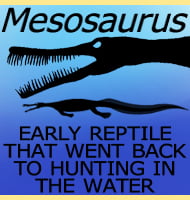Gobisaurus
In Depth Gobisaurus is very similar to another earlier named ankylosaur called Shamosaurus, yet there are enough differences in the skull features to be certain that these are separate genera, but ones that seem to be closely related. New analysis of the Ulansuhai Formation has also indicated that Gobisaurus may have lived around the Turonian … Read more
